#nigerian painter
Text

Okoye Chukwuemeka John
513 notes
·
View notes
Text

Bruce Onobrakpeya
Studies for Ekube II unstretched and unframed
2 notes
·
View notes
Text
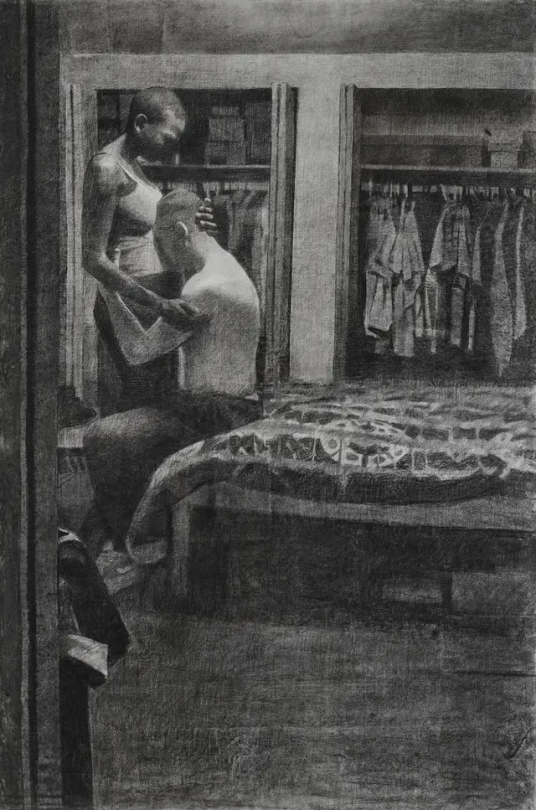
Njideka Akunyili Crosby - A Conflict of Interest (2009)
144 notes
·
View notes
Photo

David Olatoye Babatunde
Times Are Changing: New Works by Nigerian Artists, David Olatoye Babatunde and Victor Olaoye
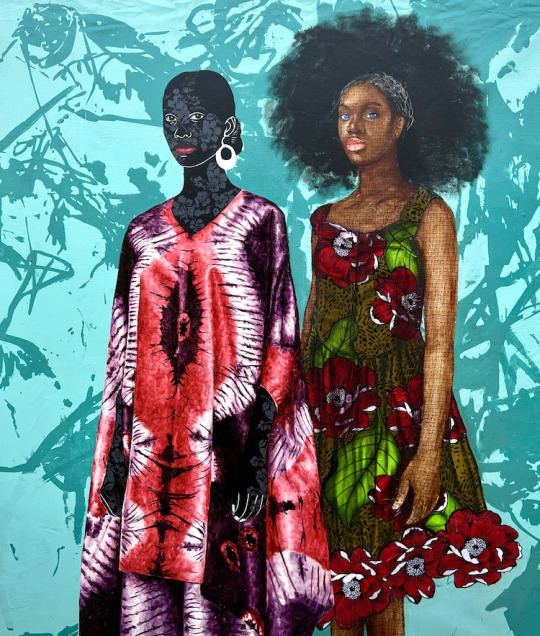
David Olatoye Babatunde and Victor Olaoye
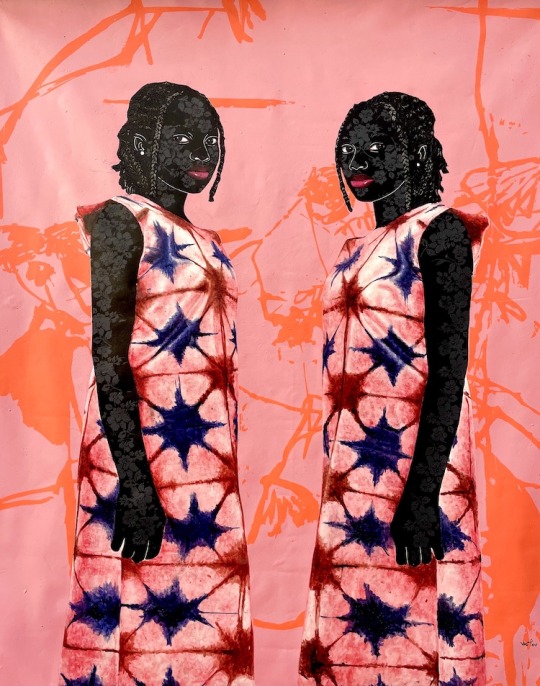
Victor Olaoye

Victor Olaoye
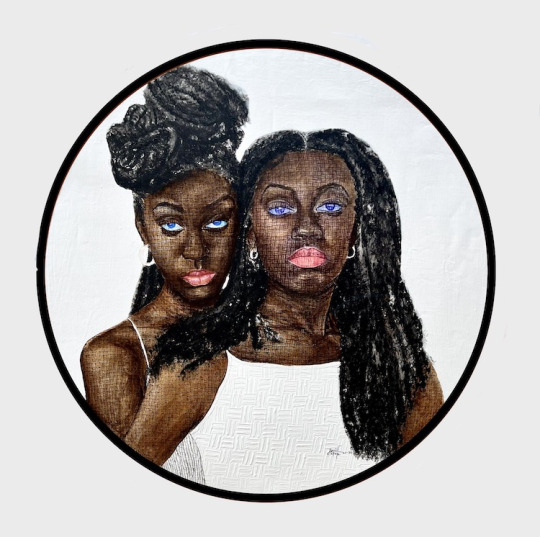
David Olatoye Babatunde
3 notes
·
View notes
Photo

11 notes
·
View notes
Text
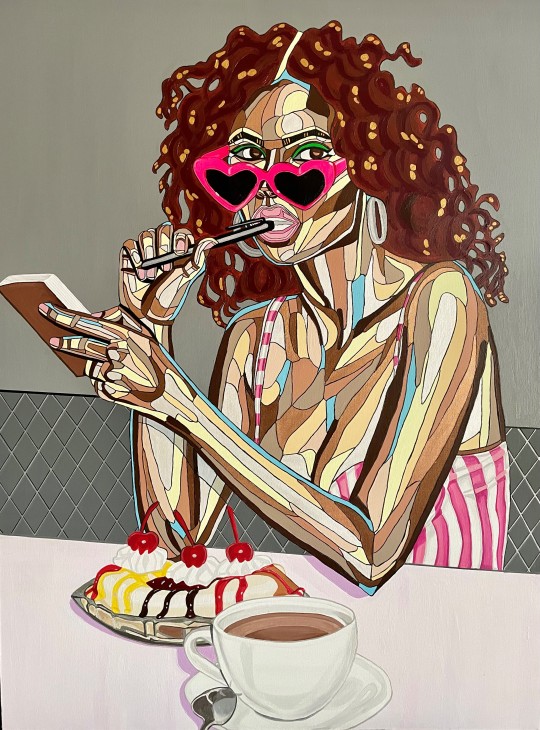
Unapologetic Indulgence, 2022 - REWA
#REWA#women artists#women art#women painters#black artist#nigerian artist#contemporary art#contemporary painting#acrylicpainting#acrylic#contemporaryart#jonathan ferrara gallery#artwork#art gallery
3 notes
·
View notes
Text
Rewind the Tape —Episode 3
Art of the episode
Just like we did for the pilot and for episode two, we took note of the art shown and mentioned in the third episode while we rewatched it. Did we miss any? Can you help us put a name to the unidentified ones? Do you have any thoughts about how these references could be interpreted?

On the Origin of Species*
Charles Darwin, 1859
* Not exactly art...
...and not exactly confirmed, but given the time, the subject of their conversation, and Lestat's "...this naturalist that fogs your mind" remark, this seems the most likely attribution for the book Louis is reading during the opening scene.

Darktown Strutters' Ball
Shelton Brooks, 1917
The song Antoinette is first singing was published that same year, and you can hear it performed by The Platters here.
Minuet in G
Christian Petzold, circa 1725
As pointed by @cardassiangoodreads in this post, the song Lestat first plays before he starts improvising is Petzold's Minuet in G, often falsely attributed to Johann Sebastian Bach.
Wolverine Blues
Jelly Roll Morton, 1923
While the scene in which Lestat improvises the melody happens in 1917, Morton would go on to record and release the song in Indiana in 1923.

Slave Auction
Jean-Michael Basquiat, 1982

Our very first look at Basquiat's Slave Auction comes in the third episode, though it will be the backdrop of most of the sixth. While some elements, like the crown of thorns, lend themselves to varied interpretations, it's clear this collage shows a boat (golden for money, perhaps) crossing a blue expanse, and the faces of the slaves being transported.
Mother Daughter and Twins 1
Rahmon Olugunna, undated

Rahmon Olugunna, born in Osogbo in 1975, is a member of the Oshogbo school of artists in Nigeria. His work represents Yoruban mythology as well as modern Nigerian life. He is represented by New Orleans curator Katie Koch. [Identified by @vfevermillion.]
Untitled ceramic totems
Julie Silvers, undated

Each unique totem is made by New Orleans native Julie Silvers, and they are distributed by New Orleans store Villa Vici. Two can be seen in the sitting room. [Identified by @vfevermillion.]
Javelina
Bryan Cunningham, undated

By "Junkyard Alchemist" Bryan Cunningham, who posted about it here. [Found by @iwtvdramacd18.]
In the same shot we can see an unidentified painting, maybe of a man's profile. Perhaps you can place it?


Untitled photo of loading docks in St. Paul, Minnesota
Bradley Olson, 2015 (Alamy Stock Photo)


Forty-two Kids and Cliff Dwellers
George Bellows, 1907 and 1913 respectively
Several Bellows pieces have been featured around Rue Royale already, in episodes one and two. [Identified by @nicodelenfent, here.]

Nocturnes, Op. 55: No. 1 in F minor. Andante
Frederic Chopin, 1842-1844
This is the song that plays during Jonah and Louis's escapade to the Bayou.

Roman Bacchanal
Vasily (Wilhelm) Alexandrovich Kotarbiński, 1898
Kotarbiński was a Polish artist and painter of historical and fantastical subjects, and co-founder of the Society of Kyiv Painters. [Identified by @nicodelenfent.]


Weeping Nude
Edvard Munch, 1913
Young Man kneeling before God the Father
Egon Schiele, 1909
Two more artists we've seen already, in episodes one and two.
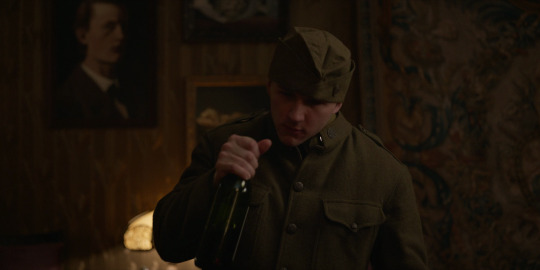

Self-Portrait
Edvard Munch, 1881-1882
Bouquet in a theater box
Pierre-Auguste Renoir, 1871
While we have seen Munch's work already, this is the first Renoir featured. He was a French artist and a leading figure in the development of the Impressionist style. [Identified by @nicodelenfent.]

Church in Stein on the Danube
Egon Schiele, 1913 [Identified by @nicodelenfent, here.]
If you spot or put a name to any other references, let us know if you'd like us to add them with credit to the post!
This week, we are rewatching and discussing Episode 4, …The Ruthless Pursuit of Blood with All a Child's Demanding. We can't wait to hear your thoughts!
And, if you're just getting caught up, learn all about our group rewatch here ►
#louis de pointe du lac#daniel molloy#lestat de lioncourt#vampterview#interview with the vampire#iwtv#amc interview with the vampire#interview with the vampire amc#amc iwtv#iwtv amc#IWTVfanevents#rewind the tape#is my very nature that of a devil#analysis and meta#art of the episode
33 notes
·
View notes
Note

You're after my heart, π! /rubs knuckles
A friend—and then a bestest friend, please!
(A bestest friend is basically the highest tier of partnership I can envision.)
I'm not choosing a dear emperor character cause you know them and it'd be a little boring. So for two characters I think you'd be friends with, there's Wei Qi and Pelagia!
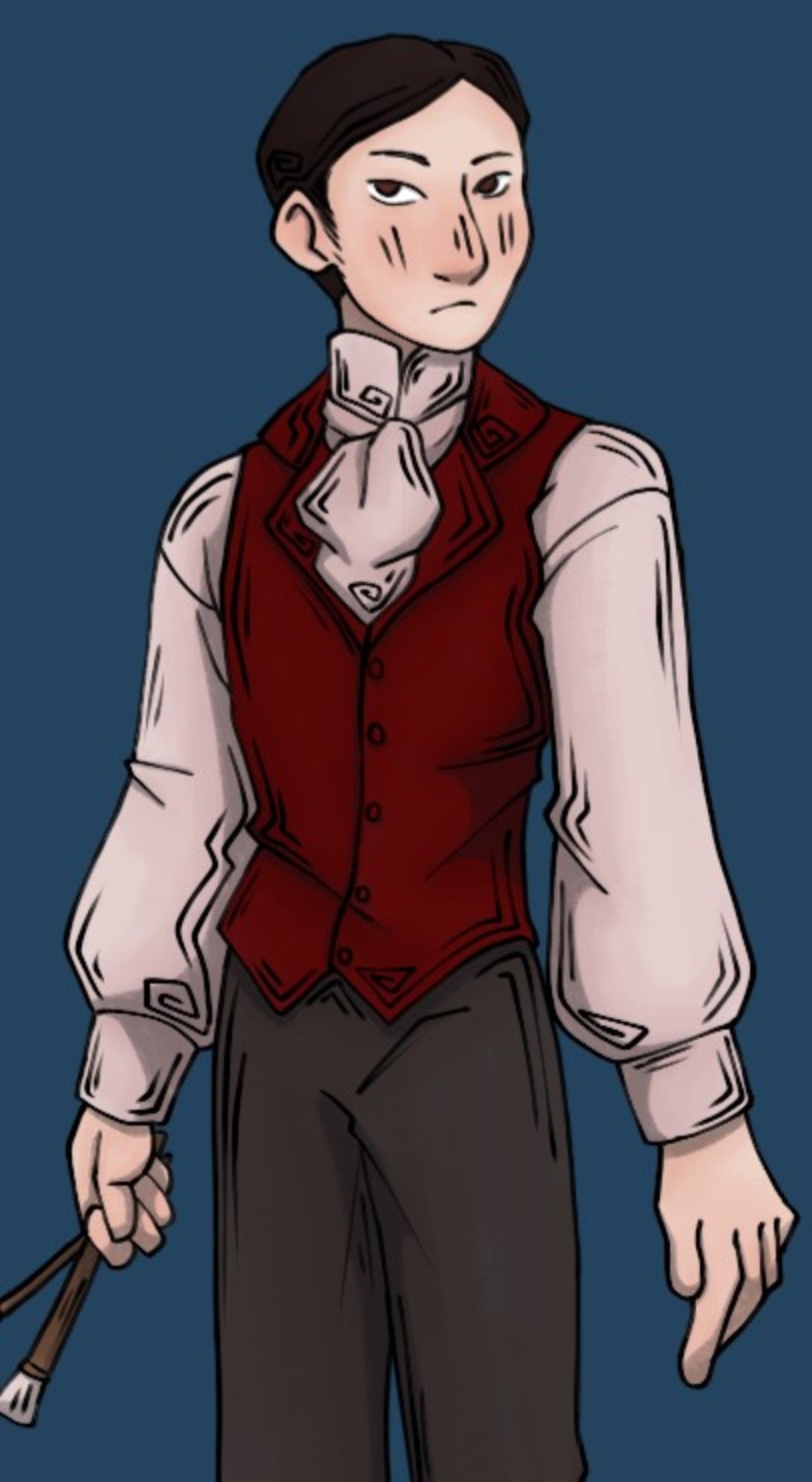
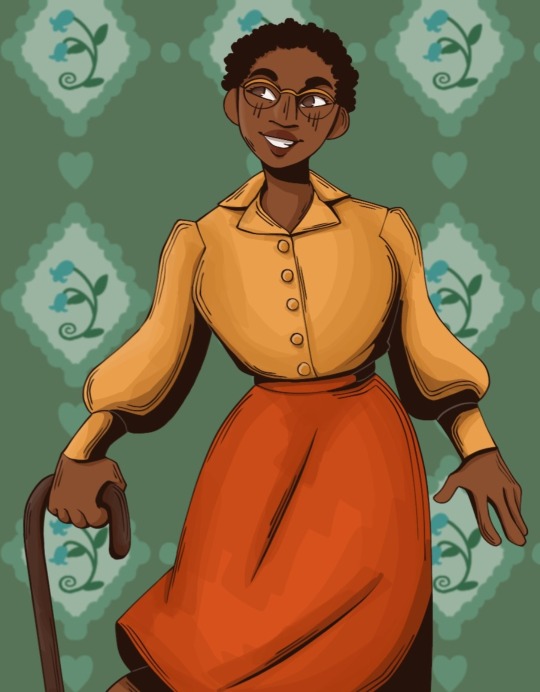
Wei Qi is a Chinese/Hungarian painter in the 1870s! He has anxiety and autism and he's a werewolf. He's very nervous and quiet and extremely easy to startle, but he's kind and is a talented painter. He lives a simple and quiet life doing commissions and plans to marry his girlfriend Lena.
Pelagia is a Columbian/Nigerian college student studying math with plans to specialize in statistics. She's depressed because her family is falling apart at the seams and she wants to escape her horrible little hometown.
They're both nervous anxious people who absolutely LOVE long debates on politics and philosophy, so I think you'd love talking to them.
7 notes
·
View notes
Text
Painting by contemporary Nigerian painter Ibrahim Saleh Lamishi

4 notes
·
View notes
Photo

2022 Beautiful Bizarre Art Prize ICANVAS DIGITAL ART AWARD FINALIST: NK Jules - "Aftergrowth" [Digital Painting & Drawing]
“I’m a Nigerian-born artist living in the Netherlands. As a digital painter, my work addresses escapism and navigates femininity through the use of surrealistic florals, biomorphism, portraiture, and figuration. I make use of textures and some elements of mark-making to preserve the traditional feel of my digital paintings. Further, the connection and emphasis between blackness and gentleness are rare in western art circles. I do not let this bother me. I simply ensure that I come as I am.”
The 2022 Beautiful Bizarre Art Prize is proudly sponsored by:GOLD SPONSORS: Raymar Art, INPRNT, iCanvas, Yasha Young Projects, ArtStation SILVER SPONSORS: SmArt School, PoetsArtists, Digitalprintmaker, Static Medium Print & Photo, Rosemary & Co Artists Brushes
See all 25 Digital Art Award Finalists at https://buff.ly/2F2oww9 [link in our profile]
...
#beautifulbizarre #beautifulbizarreartprize #internationalartprize #artprize #digitalart #digitalartist #digitalartwork #digitalpainting #alternativeart #artwork #style #contemporaryart #newcontemporary #art #artist #visualart
58 notes
·
View notes
Photo
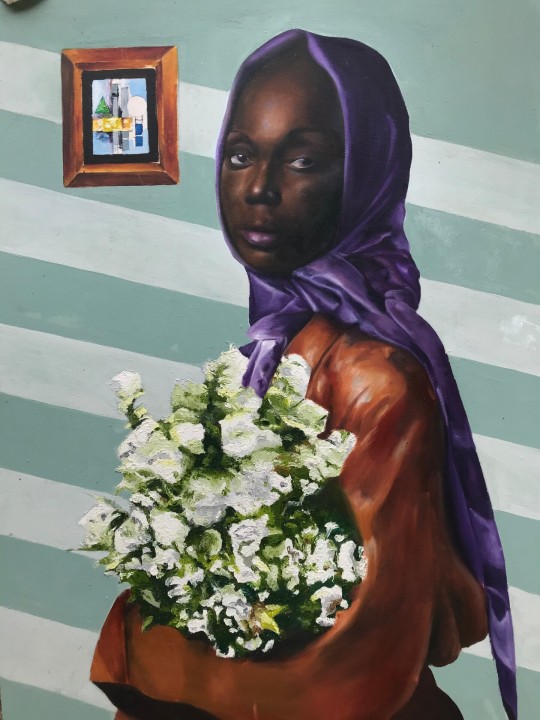
SWEET MEMORIES THAT LINGERS by Oluwaseyi Afeez Aregbede
218 notes
·
View notes
Text
Kentucky, 1850. An enslaved groom named Jarret and a bay foal forge a bond of understanding that will carry the horse to record-setting victories across the South. When the nation erupts in civil war, an itinerant young artist who has made his name on paintings of the racehorse takes up arms for the Union. On a perilous night, he reunites with the stallion and his groom, very far from the glamor of any racetrack.
New York City, 1954. Martha Jackson, a gallery owner celebrated for taking risks on edgy contemporary painters, becomes obsessed with a nineteenth-century equestrian oil painting of mysterious provenance.
Washington, DC, 2019. Jess, a Smithsonian scientist from Australia, and Theo, a Nigerian-American art historian, find themselves unexpectedly connected through their shared interest in the horse--one studying the stallion's bones for clues to his power and endurance, the other uncovering the lost history of the unsung Black horsemen who were critical to his racing success.
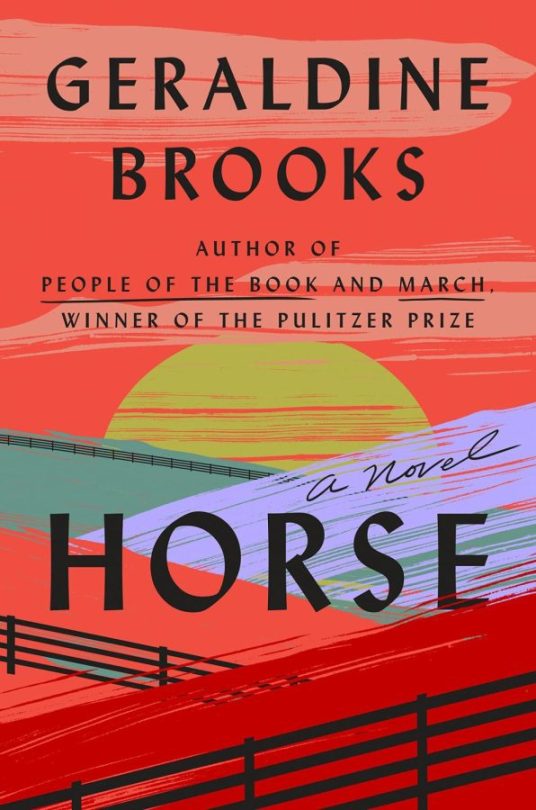
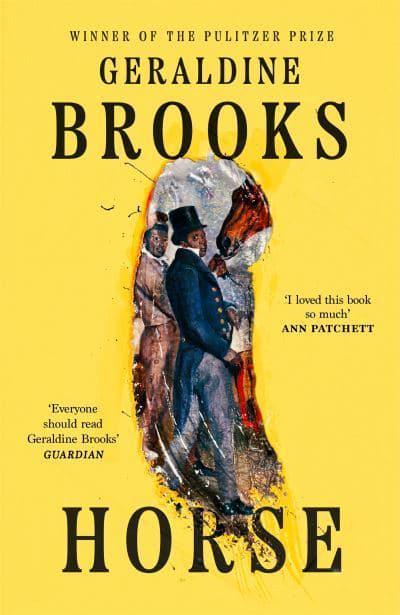
4 notes
·
View notes
Text

Njideka Akunyili Crosby - I'm Not a Witch Doctor (2009)
128 notes
·
View notes
Text
Dust Volume Nine, Number Seven

Chuck Johnson
Is it hot where you are? Has it been raining a lot? Is there smoke in the air? It's been the weirdest, most disturbing summer, and you might think it would make music irrelevant. But no, this is Dusted, and we continue to listen and judge and write about records even at the end of times. So here's another Dust. Enjoy. We hope there will be one next month, too, but let's see what happens, eh?
Contributors include Jennifer Kelly, Bryon Hayes, Jonathan Shaw, Chris Liberato, Ian Mathers, Patrick Masterson, Jonathan Shaw, Andrew Forell and Tim Clarke.
Omar Ahmad — Inheritance (AKP)
Inheritance by Omar Ahmad
Omar Ahmad’s music follows dance pulses through thickets of memory. A glitchy beat sinks into slippery textures of synthesizer, piano, strings and field recordings; the music moves but in a haze of memory, as the sounds of women, children and running water flashes and subsides. Omar Ahmad is a Palestinian-American electronic artist and DJ currently based in Brooklyn and in this first full-length, he explores identity (ethnic and otherwise) through a scrim of memory. These glowing ambient compositions don’t hammer the point home—rather they gently suggest and evoke a dual western/Arabic identity. The baby in “Gesso” says “Daddy” in English but is answered in another language. The cut “usra” whose name translates as “home” or “family” incorporates a ululating non-western vocal alongside the pristine electronic modernity of synths. “Sham Oasis” has, perhaps, the most concentrated array of Middle Eastern sounds, a jangle of not-guitars, the thud of hand drums, a shaker, but it also twitches and glitters with space-age electronic sounds. The songs have lovely, idealized, luminous textures that don’t belong, exactly, to any single culture, yet they are warm and beautiful enough to make it feel like home anyway.
Jennifer Kelly
Animal Piss It’s Everywhere — S-T (Half a Million)
Animal Piss, It's Everywhere by Animal Piss, It's Everywhere
This loose and goofy country ramble obsesses over Jesus and intoxicants, sometimes but not always in the same songs. Indeed these bleary sing-alongs seem best suited for Sunday morning with the sun streaming in on the tail end of a one- or two-day bender. They’re exhausted but full of good feeling, played on muscle memory and love of the game. “Jesus Got Under My Skin,” for instance, ramps up the roadhouse boogie in a stunned and stoned narrative about finding one’s savior—and then trying to ditch him. “Naked” slouches and twangs in a righteous chorus of “Naked…ass…man…blues.” There’s considerable talent on hand, however casually it is deployed, from a confederation of Western Mass freak folk regulars. A guitar-heavy line-up features Anthony Pasquarosa, Clark Griffin (Weeping Bong Band, Pigeons), Shannon Ketch (Bunwinkies) and Andy Goulet on pedal steel (Winter Pills, Lonesome Brothers etc.). Rob Smith from Rhyton and Mouth Painter plays drums and Jim Bliss (of various Matt Valentine projects) sits in on bass. “I’ve found sucksess, sucking at success,” croons the singer, making a point; this band of miscreants achieve their aims without coming within a hundred miles of commercial palatability.
Jennifer Kelly
Aunty Rayzor — “Nina” (Nyege Nyege Tapes)
youtube
Perhaps the hardest song I heard over the last month opens with an almost demented pogoing and a video staring straight at the sun with an airplane’s corpse and a silhouette on the wing fixing her hair before she struts into your life and all over your ears. If you don’t already know Bisola Olungbenga aka Aunty Rayzor, Nyege Nyege Tapes has done a fine job ensuring you’ll want to hear everything the Nigerian has to say after one listen through of “Nina,” the lead single from September’s Viral Wreckage. Veering between red hair and blonde amid rusty MiG-21s, Rayzor takes the hard-nosed rhythm from Berlin-based beatmaker Debmaster — just listen to the way that kick rumbles on the low end — and matches it step for step to powerful effect. You don’t need Nyege Nyege’s effusive description of the forthcoming full-length to gather we have another formidable female rapper waiting in — or is it on? — the wings to embarrass the boys and prolong women’s global chokehold on the genre that little bit longer. Only a fool or an incel could complain.
Patrick Masterson
Aware — Requiem for a Dying Animal (Glacial Movements)
Requiem For A Dying Animal by AWARE
Alexander Glück, who records as Aware, specializes in producing a haunting tributary of ambient sound that aims to cause unease. His music is ghostly, chilling, and morose. It evokes loneliness yet, like most good stories, contains a faint trickle of hope. His compositions encompass vast swathes of tone peppered with microscopic flecks. These resemble large chunks of metamorphic rock that Glück has fused into rich, veiny patterns. These polychromatic constructions tell stories of isolationism and hardship interspersed with hopefulness and joy. They reflect our species’ interconnectedness with a natural world that simultaneously seeks to nurture and destroy us, as we in turn seek to exploit its bounties. With his music, Glück seeks to find an equilibrium, a stalemate between us and our environment. He will likely never solve this riddle, but Requiem for a Dying Animal is a fruitful step on the journey toward his goal.
Bryon Hayes
Blight House — Blight the Way (Syrup Moose Records)
Blight the Way by Blight House
Blight House makes the kind of death metal-infused grindcore that aims for utter absurdity: absurdly heavy riffing; absurdly fast drum-machine blips, blats and thumps; absurdist, so-stupid-they’re clever semiotics. It’s hard not to laugh (or at least ruefully chuckle) at the puns in the band’s name and in the title of this new record. Song titles are even dumber and sometimes even more funny: “Dismembers Only,” “Bible Belt Baby Buffet,” “Walpurgis Date-Night.” And so on. But as is generally the case with records like this, it’s hard to know where the joke ends and the band begins. If it’s all done for laughs, then why is the music executed with such apparent seriousness (n.b., for a less overworked version of a grindy gag act, see this)? And if we’re supposed to hear at least some of Blight House’s stuff with a dash of gravid sincerity, then please, band, send instructions on how to pull off that bit of cognitive jiu-jitsu. Or on second thought, maybe don’t. It’s probably better for everyone involved if we just accept the low-brow yucks to be found in songs like “Acephalophilia III: Hopelessly Headless for You” for what they are, and take the tune at its word. If you think about this sort of edge-lord-adjacent, meme-driven cultural production too hard, you may end up in the writers’ room for Ron DeSantis’s next campaign commercial. Headless and heedless, thoughtless and feckless—blight the way into our collective, idiotic future, dudes.
Jonathan Shaw
Buffalo Nichols — The Fatalist (Fat Possum)
The Fatalist by Buffalo Nichols
Buffalo Nichols’ Carl Nichols has a fine gravelly voice, an unfussy skill with the pick and the slide and the swagger that turns songs of suffering into songs of defiance. In other words, he’s a bluesman of the first order and unusual, these days, in that he’s not 100 years old or a suburban white guy. Yes, Buffalo Nichols is on a mission to reclaim the blues for the folks who invented it—black people—and this very fine album makes a pretty good case for the rightness of his cause. How so? Well, to begin with The Fatalist is mostly acoustic, relying on the speed and accuracy of Nichols fingers rather than a floor sized pedal board; there are no endless wah wah’d solos, no feedback freakery. His vocal delivery matches up, too, quiet but intense, an on-pitch growl that pulls you in and holds you there. There’s a simplicity in the playing and arrangements that underlines the power of these song. Listen, for instance, to the eerie magic of slide, the elemental punch of kick drum on the Blind Willie Nelson cover, “You’re Gonna Need Somebody on Your Bond.” Or the winding melancholy on “The Long Journey Home,” which frolics funereally in banjo and fiddle tones. He brings in the Philadelphia singer and songcatcher Samantha Rise on “This Moment” for a duet, her voice warm and resonant, his hoarse with emotion, a violin twining around the both of them in a dizzy mesh of sounds. A subtle album, but a good one.
Jennifer Kelly
Cyberplasm — First Emanation (Iron Lung)
First Emanation (LUNGS-262) by CYBERPLASM
Electro-punk dissonance melds and mixes it up with anarcho-freak industrial noise on this new EP from Olympia-based Cyberplasm. The band doesn’t seek to exorcize the ghost in the machine so much as conjure it, feed it with nerve impulses harvested from your frontal lobes and then unleash it on our various political and informational systems. Chaos ensues. Maybe it’s liberatory, maybe it just wants to raze all signs of institutional power. Too damn bad if your sense of security or self-worth gets in the way — and in any case, the music is perversely enjoyable. Check out the d-beat scree of “Spit from Fluid” or the foreboding, crust-infused “Second Mind.” The EP’s ten minutes flash by in a series of burned-out synapses and frying amplifiers. Cyberplasm makes underground music that captures the grit and weirdness of lawless subterranean spaces, virtual and material. It’s exciting stuff. It feels dangerous. Punk’s not dead.
Jonathan Shaw
Decoherence — Order (Sentient Ruin Laboratories)
Order by DECOHERENCE
If you have been following Decoherence’s coruscating, cosmic circuit through the 21st century, you won’t find much to be surprised by on Order, the band’s new LP. It’s 40+ minutes of pounding, pyrotechnic industrial metal, thoroughly blackened and shot through with enough harsh noise to burn off your eyebrows. The pace is a little slower, vocalist Derek Jacobsen (who appears on Decoherence releases as Tahazu, an anglicized version of the ancient Sumerian word for battle) sounds like another layer of gristle is occluding his vocal cords, and the compositions of musicians Stroda and Prior are marginally less engaged by melody than many of those on the band’s previous LP, Unitary (2020). If you’re into this sort of thing, none of those small changes is a bad thing. But while Unitary represented a profound development when contrasted with the band’s first several releases, Order feels like a consolidation — a band summing its aesthetics and refining its songwriting sensibility. Which suggests an interesting question: How much order do we want in metal music? This reviewer likes it when Decoherence embraces the chaos denoted by its band name. Check out “An Unconfined System” on this new record. Play it very, very loud. Order? Not so much.
Jonathan Shaw
Drekka—The Water of Life (Orb Tapes)
The Water of Life by Drekka
Michael Anderson, the artist who records as Drekka, made these four long-form meditations for a live performance in Indianapolis in 2015, loosely basing his mix of primitive and electronic sounds on the sci fi classic Dune. All four cuts evolve slowly out of hiss and static (the first one is even called “Stasis and Static”), a buzz like live power wires in the foreground, the faint ghosts of bells, altered choral voices rising up occasionally to mysterious ends. You could, of course, construct an imaginary Dune world out of these sounds, its vast deserts and obliterating sandstorms, its mystic addiction to spice, but it would take some active listening and imagining on your part. The title track assists, somewhat, submerging drips of liquid in the rumble of wind flapping through sails, and the nearly human chants that rise as if from a distance out of the noise. There’s a lot of activity here, a scramble to rattle bits against each other, the click and ching of various percussive elements. And through it comes the hum of dawning revelation, just hovering notes rising, but seeming to reach some inscrutable insight out of the noisy scrum.
Jennifer Kelly
The Finks — Birthdays at Solo Pasta (Milk!)
Birthdays at Solo Pasta by The Finks
Courtney Barnett’s recent announcement that her label Milk! Records will be closing down at the end of the year means that The Finks’ Birthdays at Solo Pasta will be one of the label’s final releases. This feels fitting for a label that has quietly released some understated gems over the years from artists such as Tiny Ruins and Mess Esque. The Finks, led by Oliver Mestitz, create the kind of intimate, loosely woven songs that thrive on the obvious ease between the players, as if you’re listening in to a front-room jam session in which everyone is warmed up and starting to develop their instrumental parts into a lively, organic whole. Mestitz leads the way with his quiet, congested voice, as if he’s perpetually getting over a head-cold, often accompanied by the complementary vocals of Sarah Farquharson. The rhythm section, piano and guitar are wonderfully restrained, the woodwinds muted and sinuous, with everything unfolding patiently. At their best, such as on “Marco Polo” and the instrumental “Ego Slump,” The Finks tap into something truly gorgeous and radiant.
Tim Clarke
Frode Gjerstad / Kalle Moberg / Paal Nilssen-Love — Time Sound Shape (PNL)
Time Sound Shape by Gjerstad / Moberg / Nilssen-Love
If you’ve been tracking Scandinavian free music for the past few decades, you might think you know what record sounds like when you hear that Frode Gjerstad and Paal Nilssen-Love are on it. After all, they’ve been playing together since the latter was a teen and the former was trying to lure promising players into the out-jazz life, and they’ve made a fair number of steaming recordings in that time. But they haven’t made anything quite like Time Sound Shape. Recorded at the Gamle Aker Kirke, Oslo’s oldest edifice, in 2021, it may be completely improvised, but it takes its cues from circumstance, space and opportunity, and those cues point the music in a very different direction. The old stone church’s resonance amplifies Nilssen-Love’s all-gongs set up into a massive sonic presence, and accordionist Kalle Moberg conspires with the percussionist to create a solemnly orchestral breadth of sound. Gjerstad, alternating between alto sax, alto flute and Bb clarinet, sharpens the action with short, anguished cries. This is the biggest sound that three guys can make without the assistance of electricity.
Bill Meyer
Gerrit Hatcher — Solo Five (Kettle Hole)
Solo Five by Gerrit Hatcher
Gerrit Hatcher’s learned well. Instead of waiting for fortune, the Chicago-based tenor saxophonist makes things happen. He plays in town quite often, tours econo and self-releases music on his own label, Kettle Hole Records. The title of this album (a real, glass-mastered CD, unlike the blue-faced disappointments so often sold under that name on Bandcamp these days) attests to his devotion to solo performance. It takes practice as well as physical prowess to command the quivering presence and driving force of his tone, which might remind some of Dave Rempis. Each of the album’s seven tracks makes an assertive statement, but not always a big, loud one; windy textures can be as compelling as rippling notes.
Bill Meyer
James Howard — Peek-a-Boo (Faith and Industry)
Peek-a-Boo by James Howard
James Howard’s debut is all stardust and stopped time. For some reason, I’m reminded of that scene in Buffalo ‘66 where Ben Gazzara, in surreal Sinatra-in-a-tee-shirt mode, croons his father-in-law-y feelings to an entranced, doe-eyed Christina Ricci. Except that Howard’s voice is closer to the dreamy, chill side of Roger Waters (see “St. Tropez'' and “Wots… The Deal”). And his songs are about things like meeting up with your drug dealer on the scenic outskirts of town and raising your children to fear nuclear annihilation. The high point of Peek-a-Boo might be “The Reckoning,” where Howard’s fingers tiptoe up the fretboard like a kid on Christmas Eve on his way to peek at his presents, and cymbals splash like someone on tranquilizers falling into a pool. But really the whole record is a gem and feels like one big, wonderful, floaty, pill-powered dream.
Chris Liberato
Chuck Johnson — Music from Burden of Proof (All Saints)
Music From Burden Of Proof by Chuck Johnson
Chuck Johnson has long been a master of eerie pedal steel atmospherics, building shadowy cloudscapes out of shifting, resonating guitar tone. Here he turns his grasp of sonic mystery to cinematic ends, composing music both guitar-based and not for the HBO series Burden of Proof. If you’re familiar with Johnson’s solo work, the opening “Burden of Proof” will catch you up short with its Bach organ cantata ominous-ness, its densely arranged chamber strings. It sounds not at all like the silvery dream narratives of Balsams or The Cinder Grove; it gathers up in stirring crescendos of emotional turmoil. “The Night of the Disappearance” fits more neatly with what you might have heard before from Johnson. It floats lingering traces of bending guitar sound over a slow lattice of electric keyboard. But setting aside expectations of what Chuck Johnson should or shouldn’t sound like, there is quite a lot to appreciate here: the glittering rhythms and bare-bones bass plunk of “Interrogation,” the swelling synth tones of “Ruth Ann,” the bright cerebral keyboard cadences of “The Note.” Not having seen the show, I can’t tell you how the music works (or doesn’t) to support mood or plot points, but here on the record, it’s subtle and varied, and occasionally, as on “More Surreal” has the slow moving contemplative grace that distinguishes Johnson’s best work. He’s making art and likely getting well paid. Good for him.
Jennifer Kelly
Héctor Lavoe — La Voz (Craft Latino)
youtube
After arriving in New York as a teenager, Puerto Rican singer Héctor Lavoe became a key figure in the popularization of salsa during the 1960s and 1970s. As part of the Fania label roster that included Willie Cólon, Rubén Blades and Celia Cruz, Lavoe released nine albums beginning with his 1975 debut, the aptly named La Voz. Produced and arranged by Cólon, the album foregoes much of the instrumental pyrotechnics of his contemporaries’ records to focus on Lavoe’s voice and improvisational talents. Opener “El Todopoderosa” (The Almighty) features frenetic percussion, piano vamps and blasts of brass which, good as they are, have no chance distracting from Lavoe’s caramel smooth tone and timbre. The clarity of his voice carries the emotional weight of “Un Amor de la Calle” even as the horns weep behind him. On the joyful, faster numbers his call and response with backing vocalists Cólon, Blades and Willie Garcia drive the songs forward but there’s plenty in the background to grab the ears. Witness the off-kilter piano and trumpet solo in “Rompe Saragüey” or the percussion and horn breakdown in “Mi Gente.” Whether you’re a salsa fan or not, this is an opportunity to hear one of the great vocalists in his prime with a killer band and irresistible songs. What’s not to love.
Andrew Forell
Natalie Rose LeBrecht — Holy Prana Open Game (American Dreams)
Holy Prana Open Game by Natalie Rose LeBrecht
It would not be accurate to describe Natalie Rose LeBrecht’s new record as a mix between La Monte Young/Marian Zazeela’s (who she’s studied with and assisted) cosmic minimalism and the Dirty Three’s more spacey, searching efforts (that trio’s Mick Turner and Jim White both play on Holy Prana Open Game), but even in its inadequacy the comparison points towards the kind of rarified air the record is floating amidst. It’s kind of wild to remember that “Amok” here is a radically transformed (one might even say, ahem, improved) cover of the Atoms For Peace song, it’s so of a piece with the other five pieces that make up the album. Whether it’s the more open excursions of “Open” and “Prana” or the gentle lilt of the opening “Home,” this suite soars into inner space immediately and rests there contentedly.
Ian Mathers
Gabe ‘Nandez — “Louis XIV” (POW Recordings)
youtube
Anyone paying attention to Jeff Weiss’ POW Recordings has been able to surmise how enthusiastic the label head has been about the hushed husk of New Yorker Gabe ‘Nandez, and Gabe’s returned the favor in kind with polyglot explorations of the inter- and intrapersonal alike, most recently on April’s Pangea, plus a feature alongside fellow East Coast tome spitter Billy Woods on last year’s Aethiopes. The one-off “Louis XIV” finds Gabe talking kingly killings and heartbreak over a sublimely paired beat from Tel Aviv producer Argov (he of “Venus in Mercury” that preceded this) and kitted in a Burberry coat amid London’s Abney Park cemetery. A low-slung, high-intensity performance, “Louis XIV” is self-evident, a perfect portrait of what makes ‘Nandez so lethal (and appealing) as a rapper. Anyone with an affinity for bars ought to appreciate it.
Patrick Masterson
Jim O’Rourke — Hands That Bind OST (Drag City)
Hands That Bind (Original Motion Picture Soundtrack) by Jim O'Rourke
Any word of a new Jim O’Rourke release is justifiably greeted with excitement, especially when that release is via Drag City. However, Hands That Bind isn’t a continuation of the glorious singer-songwriter fare O’Rourke has perfected on albums such as Eureka, Insignificance and Simple Songs, but rather the soundtrack to a new film by director Kyle Armstrong. The instrumental atmosphere is aligned with many of O’Rourke’s Steamroom explorations, which he’s made available in a steady stream via Bandcamp: slow, sparse, mostly abstract synthesizer soundscapes. The difference here, given O’Rourke is responding to a visual medium, is deeper grounding in the creation of an immediate evocative mood. Shimmering synth textures evoke the chittering of crickets and wide-open expanses of countryside, punctuated by percussion and the reassuring thrum of upright bass. Then, suddenly, a detuned piano or dulcimer will cut through the mix, raising an eyebrow of concern, as if uncertainty is looming on the horizon. The drama of this simple juxtaposition creates an addictive tension that sustains this elegant suite’s runtime.
Tim Clarke
Rat Heart — “Flashing Lights Freestyle” (Shotta Tapes)
Rat Heart - Flashing Lights Freestyle by Shotta Tapes
One of Kanye’s most indelible beats is herewith given a kind of Jai Paul-like treatment via Mancunian Tom Boogizm, who runs the Shotta Tapes label that’s known best for the free-for-all experiments of his increasingly visible Rat Heart alias. We’re a far cry from Northern Luv Songs 4 Wen Ur Life's a Mess, obviously, which threw all manner of spaced-out, instrumental guitar hypnotics at the wall only to see it all stick in a manner most Dusted faithful would find familiar — but this isn’t a total left turn for Tom given we’ve also seen stuff like the Actress-esque 'A Blues' come out in the last year. If you don’t know where to start with him, this serves as a good point of entry for his more beat-driven material, the vocals submerged just that little bit too much beneath the fluorescent, once-ubiquitous backing beat of the Graduation staple. Nobody’s asking for a return to 2007 (that I know of, anyway), but it’s enough for a moment to remember the music once outshone the hubris of its creator. Some of us might call that moment simpler.
Patrick Masterson
La Sécurité — Stay Safe! (Mothland)
youtube
Montreal quintet La Sécurité combine insouciant new wave and funk driven post punk on their debut album Stay Safe! It’s a lane that’s been driven before by bands like Romeo Void and Au Pairs, but they bring an infectious energy to bear. Singing in French and English, lead vocalist Éliane Viens-Synnott moves from the ironic detachment of Debora Lyall to indignant recrimination, shaping her voice to inhabit each song. Atop Kenneth Smith’s propulsive drums and Félix Bélisle’s elastic bass lines, guitarists Melissa Di Menna and Laurence Anne Charest-Gagné add chunky chords and sibilant solos. Although you can spend time picking the influences, the songs are uniformly good. The dispassionate sprechgesang of “Le Kick” with its motorik drums and Au Pairs guitar licks, the mocking tone of the Devo like “Waiting For Kenny,” the groove of “Serpent” which sounds like an amalgam of “Snakes Crawl” and “Too Many Creeps.” The rhythms are tight, the guitars slash and chime in equal measure, the quintet all contribute synths, percussion and backing vocals to their stories of toxic men, relationship ups and downs and daily grind of existence.
Andrew Forell
Jumping Back Slash, Būjin — “Order of Change” (Future Bounce Ltd.)
youtube
Would you believe this started as a piano-based folk ballad? Maybe not if you only heard the first half of the first single from a promised forthcoming album due in November. But what originated as a song with a “folklike Kate Bush flavor to it” morphed into a Janus-faced split of a dancefloor-filling first half that runs Brit-turned-South African Jumping Back Slash’s bass-heavy club deconstruction right through Cape Town native Būjin’s delicate but firm vocal before turning into a lush, orchestral outro much closer in spirit to the original idea. The balance works both ways for Būjin, who tightropes across the transition clear to the other side. What else this LP has in store remains to be seen, but it’s a promising first dispatch for those who err on the side of futuristic pop sounds.
Patrick Masterson
Whose Rules — Hasler (777 Rules)
Hasler by Whose Rules
If you’ve got any sort of weakness for airy, breathless, pristine indie pop, may I suggest Whose Rules, the solo endeavor from a busy Norwegian producer named Marius Elfstedt. This first album, Hasler, touches ever so lightly on sonic territories staked out by Elliott Smith: a wistful tenor warble wrapped around softly inevitable tunes. You might even catch a whiff of the Sea and Cake’s breezy artfulness. Yet while the songs aren’t weighted down, they’re not exactly scrubbed bare either. Elfstedt’s producer background shows through in shifting, transparencies of overlaid sound: guitars, synths, percussion frame delicate melodies but don’t overwhelm them. The music wafts by in a flavored cloud, but there’s a good deal of nourishment in its ethereal mix. I like “Stone” with its scrabbly guitars, its rainy/sunny moods, its sudden swells of synth that could easily be horn lines. There’s a bigger, brassier song in here somewhere, but for now it’s hiding shyly, reticently in a private corner of Elfstedt’s imagination.
Jennifer Kelly
#dusted magazine#dust#jennifer kelly#omar ahmad#animal piss it's everywhere#aware#bryon hayes#aunty razor#patrick masterson#blight house#jonathan shaw#buffalo nichols#cyberplasm#decoherence#drekka#the finks#tim clarke#Frode Gjerstad#bill meyer#gerrit hatcher#james howard#chris liberato#chuck johnson#hector lavoe#andrew forell#Natalie Rose LeBrecht#ian mathers#Gabe ‘Nandez#jim o'rourke#rat house
4 notes
·
View notes
Photo


Yinka Shonibare
Yinka Shonibare is a British-Nigerian painter, sculptor, and filmmaker. He creates work that explores colonialism, post colonialism and globalisation. He is known for his use of Dutch wax cloth. Similar to how Said (1978) investigated oriental fabrics, Shonibare found that the fabric was not actually african but rather they originate from “Indonesia, from whence it travelled to Holland then onto Manchester and only then finally reached Africa.”(Guha 1994) The revelation that they were not genuine patterns did not stop Shonibare from using them. Instead, it gave his work another dimension: it demonstrates transindividuality and the separation of identity from fixed nation states.
He is also known for his patterned headless sculptures that were inspired by nineteenth century british dresses from the Victoria and Albert Museum. His playful style deconstructs and reconstructs history by mixing different elements from juxtaposing cultures. He calls this collection of work “ethnocised aristocracy” (Bloomberg Originals, 2015). By removing the heads of the figures, he creates a sense of anonymity. Without a face, the viewer cannot assume their race or ethnicity. Like many of the other artists, the hybridity expressed also shows fragmentation and an “erosion of boundaries”(Nederveen, 2009)
I think it is quite charming how he separates his political stand point in order to create fun and lightheatred art, that is accessible by any individual. He wants to convey multiplicity as he says “I’m more interested in this idea of a hybrid” (Jagoe, 2017) as opposed to the interpretation from writers that the work is about “cultural appropriation” (Young, 2018)
In my work, I would like to think about embedding the symbolism in the pattern and the significance of the patterns that I am using. For example, in my second lino I have used a tiger print. The connotations of the tiger and the origins of the iconography can be different to different individuals however the complexity of the symbols give my work more depth, like how Shonibare used textiles that have a long convoluted history.
Bloomberg Originals, 2015, Portraying the Sordid Shadow of Colonial History: Yinka Shonibare Available at: https://www.youtube.com/watch?v=x0rAIMV0k4M&ab_channel=BloombergOriginals
Guha, T, 1994 Yinka Shonibare ‘Double Dutch’, Third Text, 8:27, 87-90, DOI: 10.1080/09528829408576491
Jagoe, R. (2017, January 13). Colonialism And Cultural Hybridity: An Interview With Yinka Shonibare, MBE.
Nederveen Pieterse, J. (2009). Hybridity, so what? The anti-hybridity backlash and the riddels of recognition. In J. Nederveen Pieterse, Globalization and Culture (pp. 95-121). United States of America: Rowman & Littlefield Publishers, Inc.
Said, E, 1978, Orientalism, New York: Random House
Shonibare, Y, 1994, Double Dutch
Shonibare, Y, 2004 Scramble for Africa
Young, A. (2018). Yinka Shonibare, The Swing (After Fragonard). Available at: https://www.khanacademy.org/humanities/ap-art-history/global-contemporary-apah/21st-century-apah/a/yinka-shonibare-the-swing-after-fragonard
3 notes
·
View notes
Photo
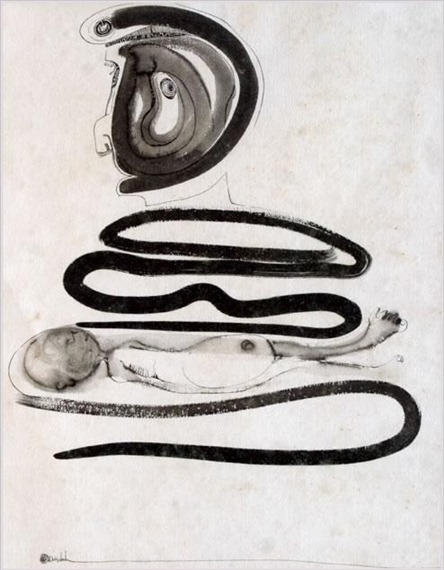

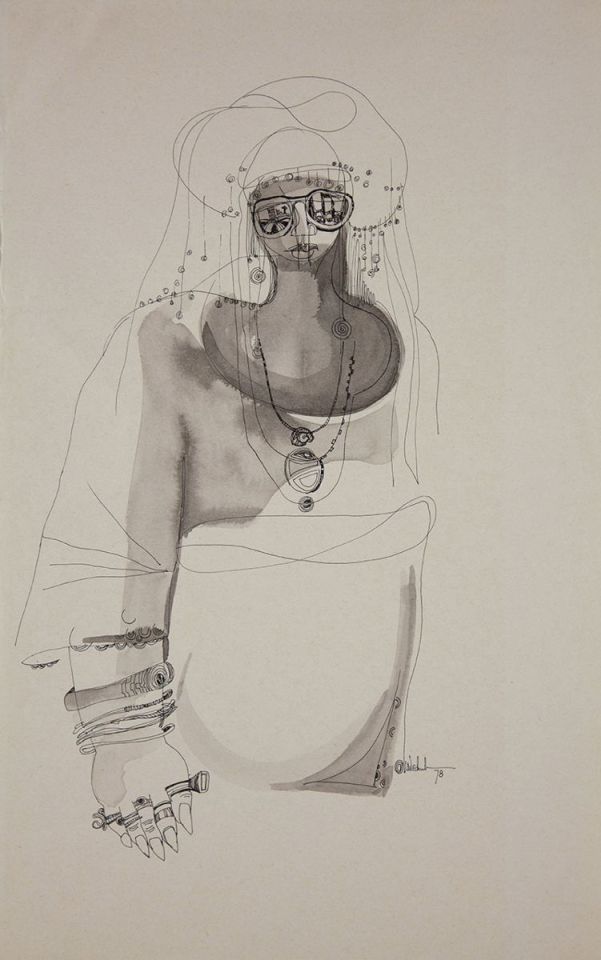
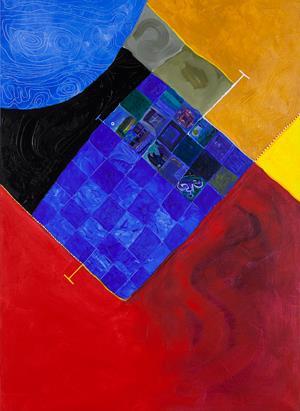
Obiora Udechukwu (born 1946) is a Nigerian painter and poet.
9 notes
·
View notes